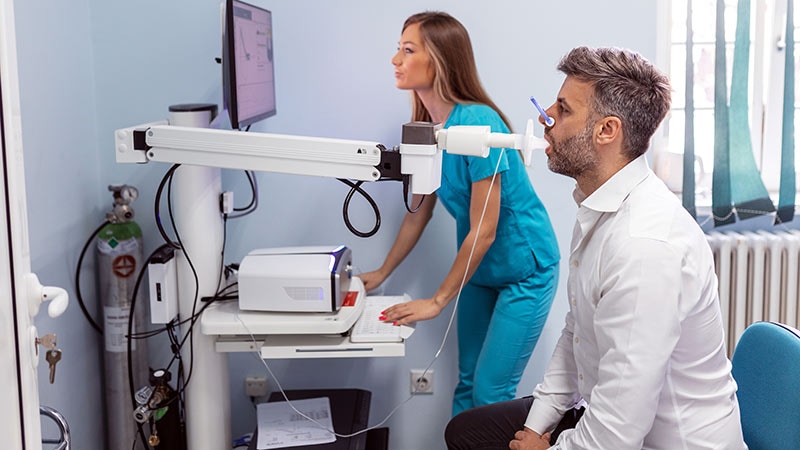DiaMedica Therapeutics Raises $30 Million in Private Placement to Accelerate Industry Leading Preeclampsia and Fetal Growth Restriction Pipeline – BioSpace

DiaMedica Therapeutics Secures $30.1 Million in Private Placement to Advance Research Aligning with Sustainable Development Goal 3
DiaMedica Therapeutics Inc., a clinical-stage biopharmaceutical company, has finalized agreements for a $30.1 million private placement. This financing is intended to advance the development of novel treatments for critical medical conditions, directly contributing to the United Nations Sustainable Development Goal 3 (SDG 3), which aims to ensure healthy lives and promote well-being for all at all ages.
Financial Transaction Details
- Total Capital Raised: $30.1 million through a private placement of common shares.
- Lead Investors: The placement was led by current investors, with no placement agent engaged.
- Share Issuance: A total of 8,606,426 common shares will be issued.
- Purchase Price: $3.50 per share.
- Anticipated Closing: The transaction is expected to close on or about July 23, 2025, pending customary closing conditions.
Strategic Allocation of Capital and Contribution to SDG 3
The capital raised is projected to fund the company’s operations for over two years. The funds are earmarked for key milestones that support specific targets within SDG 3.
- Advancing Maternal and Newborn Health (SDG Targets 3.1 & 3.2): A primary objective is to fund the submission of an Investigational New Drug (IND) application in the United States for the treatment of preeclampsia and fetal growth restriction. These conditions are significant contributors to maternal and neonatal mortality, and developing effective treatments aligns with SDG Target 3.1 (reduce global maternal mortality) and Target 3.2 (end preventable deaths of newborns).
- Phase 2b Clinical Study: Following IND approval, the financing will support a Phase 2b study to further assess the efficacy of the company’s lead candidate, DM199, in treating both preeclampsia and fetal growth restriction. Currently, there are no approved treatments for these conditions, representing a critical unmet medical need.
- Combating Non-Communicable Diseases (SDG Target 3.4): The company’s broader focus includes developing treatments for acute ischemic stroke, a major non-communicable disease. This work contributes to SDG Target 3.4, which aims to reduce premature mortality from such diseases through prevention and treatment.
Clinical Development and Impact on Global Health Goals
About DM199 (rinvecalinase alfa)
DM199 is a recombinant form of human tissue kallikrein-1 (rhKLK1), an enzyme vital for regulating physiological processes. Its mechanism is intended to address vascular diseases by increasing the production of nitric oxide and other factors that improve blood flow and endothelial health.
- For Preeclampsia and Fetal Growth Restriction: DM199 aims to lower blood pressure and improve perfusion to maternal organs and the placenta, addressing the root causes of these life-threatening conditions.
- For Acute Ischemic Stroke: The therapy is designed to increase collateral blood circulation in the brain following a stroke, potentially reducing long-term disability.
By advancing the most developed clinical program targeting preeclampsia and fetal growth restriction, DiaMedica is positioned to create a disease-modifying therapy that could have a substantial impact on global health outcomes.
Regulatory and Compliance Disclosures
- Securities Registration: The common shares sold in the private placement have not been registered under the U.S. Securities Act of 1933. DiaMedica has agreed to file a registration statement with the U.S. Securities and Exchange Commission for the resale of these shares.
- Canadian Related Party Transaction: The participation of certain related parties classifies the private placement as a “related party transaction” under Canadian securities regulations (MI 61-101). The transaction is exempt from formal valuation and minority shareholder approval requirements as the fair market value does not exceed 25% of the company’s market capitalization.
1. Which SDGs are addressed or connected to the issues highlighted in the article?
Explanation of Identified SDGs
- SDG 3: Good Health and Well-being: This is the primary SDG addressed. The article focuses on DiaMedica Therapeutics, a biopharmaceutical company raising funds to develop novel treatments for serious medical conditions, including preeclampsia, fetal growth restriction, and acute ischemic stroke. The company’s mission to “improve the lives of people suffering from serious ischemic diseases” directly aligns with ensuring healthy lives and promoting well-being for all at all ages.
- SDG 9: Industry, Innovation, and Infrastructure: The article is a clear example of this goal in action. It details a private sector investment ($30.1 million) to fund scientific research and development (R&D) for a “novel treatment” (DM199). This represents an effort to enhance scientific research and upgrade the technological capabilities of the biopharmaceutical industry, driven by innovation.
2. What specific targets under those SDGs can be identified based on the article’s content?
Explanation of Identified Targets
- Target 3.1: By 2030, reduce the global maternal mortality ratio to less than 70 per 100,000 live births.
The article states that DiaMedica is developing a treatment for preeclampsia, a major cause of maternal illness and death. The development of an effective therapy where “no approved treatment options currently” exist would directly contribute to reducing maternal mortality. - Target 3.2: By 2030, end preventable deaths of newborns and children under 5 years of age…
The company is also targeting fetal growth restriction, a condition that can lead to stillbirth and neonatal death. A successful treatment that improves perfusion to the placenta, as mentioned in the article, would help prevent these outcomes and reduce neonatal mortality. - Target 3.4: By 2030, reduce by one third premature mortality from non-communicable diseases through prevention and treatment…
Acute ischemic stroke is a primary non-communicable disease (NCD) and a leading cause of premature death and disability. The development of DM199 as a treatment for stroke directly addresses the “treatment” aspect of this target. - Target 3.b: Support the research and development of vaccines and medicines for the communicable and non-communicable diseases…
The entire press release is about securing funding for the research and development of a new medicine (DM199). The $30.1 million private placement is explicitly intended to “fund the Company’s operations” and support clinical trials for NCDs and other serious conditions. - Target 9.5: Enhance scientific research, upgrade the technological capabilities of industrial sectors… encouraging innovation and substantially increasing… private research and development spending.
The article details a “$30.1 million private placement” specifically to “accelerate our development efforts.” This is a direct example of private R&D spending aimed at enhancing scientific research within the biopharmaceutical industry to create an innovative new therapy.
3. Are there any indicators mentioned or implied in the article that can be used to measure progress towards the identified targets?
Explanation of Identified Indicators
- Implied Indicator for Targets 3.1, 3.2, and 3.4: The development and approval of new, effective treatments for preeclampsia, fetal growth restriction, and acute ischemic stroke. The article highlights that for preeclampsia and fetal growth restriction, there are “no approved treatment options currently.” The successful completion of the “Phase 2b study” and subsequent approval of DM199 would serve as a crucial progress indicator.
- Indicator related to 3.b.2 (Total net official development assistance to medical research and basic health sectors): While the article discusses private funding, not official government assistance, the core metric is the same. The “$30.1 million private placement” is a specific, quantifiable measure of financial resources being directed toward medical research and development for the targeted diseases.
- Indicator related to 9.5.1 (Research and development expenditure as a proportion of GDP): The article provides a key data point for this indicator: a “$30.1 million” private expenditure on R&D. This figure represents the “private research and development spending” that is central to Target 9.5.
4. Create a table with three columns titled ‘SDGs, Targets and Indicators” to present the findings from analyzing the article.
| SDGs | Targets | Indicators |
|---|---|---|
| SDG 3: Good Health and Well-being | Target 3.1: Reduce global maternal mortality. | Development of a new treatment for preeclampsia, a condition with “no approved treatment options currently.” |
| Target 3.2: End preventable deaths of newborns. | Development of a new treatment for fetal growth restriction. | |
| Target 3.4: Reduce premature mortality from non-communicable diseases (NCDs) through treatment. | Development of a new treatment (DM199) for acute ischemic stroke, a major NCD. | |
| Target 3.b: Support the research and development of medicines for NCDs. | Quantifiable investment in medical R&D, evidenced by the “$30.1 million private placement.” | |
| SDG 9: Industry, Innovation, and Infrastructure | Target 9.5: Enhance scientific research and increase private R&D spending. | Specific private R&D expenditure mentioned: “$30.1 million” to “accelerate our development efforts.” |
Source: biospace.com

What is Your Reaction?
 Like
0
Like
0
 Dislike
0
Dislike
0
 Love
0
Love
0
 Funny
0
Funny
0
 Angry
0
Angry
0
 Sad
0
Sad
0
 Wow
0
Wow
0







































































